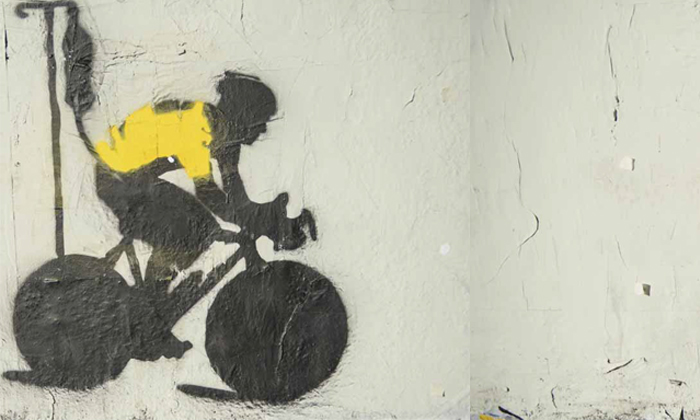In the 1980s, a researcher by the name of Bob Goldman interviewed a cohort of elite Olympic athletes on the issue of doping. One of the questions was: “If you were given a performance enhancing substance and you would not be caught and win, would you take it?” 98% of the athletes blatantly responded “Yes”. The more chilling question was: “If you were given a performance enhancing substance and you would not be caught, win all competitions for 5 years, then die, would you take it?”More than 50% said “Yes”. He repeated the same survey a decade later, and the results didn’t change. More recently in 2009, the British Journal of Sports Medicine conducted a similar research, but on non-athletes. 2% said “Yes”.
What makes athletes trade their lives for gold medals? The creed of the Olympics states: “The important thing in the games is not winning but taking part. The essential thing is not conquering, but fighting well.” As noble a goal as this sounds, it has little to do with the dark reality of the dungeon of modern sports. After all, the modern Olympics have been developed around the ancient Greek ideal of eudaimonia – to have a well-lived and flourishing life. In modern sports, where athletes are heavily financially rewarded for winning at virtually every level of elite competition, where second place is treated as the “first loser”, where a coach’s job security is directly related to his team’s success, not on whether the players are simply “fighting well” or not, the reality paints a frightening picture where athletes turn into self-destructive monsters, only to obtain a competitive edge and enhance performance at all costs.
“This is my body and I can do whatever I want to it. I can push it and study it, tweak it, listen to it. Everybody wants to know what I am on. What am I on? I’m on my bike busting my ass six hours a day. What are you on?” -Lance Armstrong, Nike TV Commercial, 2001
In this commercial dated more than a decade back, the now ‘tainted’ Lance raised probably the most important question on modern sports. We are on a spiritual drug called Sports, which turns us into narcissistic maniacs who hallucinate, through the body of athletes, on being ‘Higher. Faster. Stronger.’ But why are we fascinated by the world of ‘elite’ sports? As famous anthropologist, Clifford Geertz tells us through his study of the Balinese cock fighting culture, the owners of the cocks have a deep identification with their animals (yes, with their cocks) and “in identifying with his cock, the Balinese man is identifying not only with his ideal self, or even his penis, but also, and at the same time, with what he most fears, hates, and ambivalence being what it is, is fascinated by- the powers of darkness.” The Balinese cockfight is, as Geertz puts it, a way of playing with fire without getting burned. He also notes that higher the status of participants in the cockfight, the ‘deeper’ the cockfight is perceived to be, and the ‘deeper’ it is, the more a person identifies with his cock, and more the financial aspect of gambling associated with the fight becomes marginal. Social tensions are represented through the cockfight, but after all, it’s just a cockfight, right?
As Clifford Geertz says, “Sport is a story we tell ourselves about ourselves.”
And it is perhaps this ‘deep play’ that engulfs thousands of fantasy football players each Sunday. Hours upon hours (dollars upon dollars) are spent primarily by men to win little more than bragging rights or a trophy among friends.
But, what were you on, Lance? About 3.2 million athletes, from around the world, are slow poisoning themselves with the hope of social and financial affirmation. Coming from the ghettoes, they are sacrificing their lives to allow their brothers and sisters the luxury of education, and their families the means to live a better life. They are wagering their lives on the mythical ideals of Sport for a ticket out of poverty. Whether it be a Joe Frazier slugging it out from the slums of Philadelphia or a Karnam Malleshwari from the rural pockets of Andhra Pradesh, sport has always proved to be a route to fame and fortune.
 As former basketball player (who retired to protest against drug abuse in basketball) and sports philosopher, Ljubodrag Duci Simonovic points out from his interactions with poor athletes from around the world in an interview, “Sports is not their only ray of social affirmation, it is their only chance to survive. 99% of sportspersons are from the ghettoes, doping begins in the mind for them. They have to become fanatical about Sports and all the riches it comes with. I met a lot of black guys in America who were ready to die, only to give a chance to their families. Unfortunately, the scene is same all over.”
As former basketball player (who retired to protest against drug abuse in basketball) and sports philosopher, Ljubodrag Duci Simonovic points out from his interactions with poor athletes from around the world in an interview, “Sports is not their only ray of social affirmation, it is their only chance to survive. 99% of sportspersons are from the ghettoes, doping begins in the mind for them. They have to become fanatical about Sports and all the riches it comes with. I met a lot of black guys in America who were ready to die, only to give a chance to their families. Unfortunately, the scene is same all over.”
Remember Ashwini Akkunji Chidananda? One of the members of the women’s 4×400 relay team, which won gold in the final at the last Commonwealth games in Delhi.Eight months later, when six members of the same team — three of whom were part of the gold-winning quartet — tested positive for steroids, the country recoiled in horror and then attacked the athletes. “Doping Shame” screamed the headlines. They were thrown out of the National Institute of Sports training camp, left with no coach, no training facilities, no housing, no medical care and no food. All this while the administrators, who provided them with no nutritional support, and their coach, Yuri Ogorodnik, who provided them ginseng (the drug for which they tested positive) sneaked out of the picture.
“Just as the true picture of war are not military parades, but killed and mutilated people, desperate mothers, burned houses and fields, starving children dying in ash and mud – the true pictures of sport are not smiling faces of sportsmen at the opening ceremonies of the Olympic Games, but their degenerated bodies, ruined health, destroyed youth, life without a future…”
No one disputes that they took banned substances. But have you taken a closer look at what happened, not the black-and-white tale of athletes cheating to win? The other side of the coin tells us the story of the courage of these young women—the children of farmers, each from a different part of India, none speaking English, except for Ashwini— and their determination to fulfill the promise of social upliftment they made to their family and themselves, when they started out. After the government banned them from competition and ousted them from official training, they banded together, rented a house in Patiala just outside the National Institute of Sports campus, and began training on the road and in parks. So while you and I may fear what doping could damage, the athlete embraces dope’s promise. When fighting against all the odds, on and off the pitch, dope stands as the last option for them to cope with the hope of living a life out of the ghettoes.
Simonovic adds, “Doping is not a one-off thing. People need to understand that it is a state-regulated industry. Italy, USA, Germany, you name it… the professionals from these countries are obligated by contract to use dope. It is incredible to which extent this manipulation has reached. And there is a lot of money involved. You have the giants, the Adidas, the Coca Colas, the Nikes investing huge amounts of capital on these athletes. Obviously, they will want to see the results. The body of these athletes have become advertising billboards. It’s all about the money. Nobody cares about the lives on the line.”
Modern sports, today, have become the most important weapon of capitalism for degenerating man. It destroys not only the body, but also the critical change-oriented conscious and produces self-destructive fanaticism. Sportsmen and women of modern corporate sport have become almost robotic in their demeanour. And the media raves on about the need for “role models”. We want our young sports players to be god-like – like nothing that we are. The problem is they were already like that because they can kick longer, run faster, jump higher than the average – drugs or no drugs.
So why would we want them to be robots? Clubs now have a bevvy of sports scientists who tell players what to eat, when, where and how. They put in place all sorts of technologies to measure and control. And as the pressure and opportunity for profit expands and the related industries see a chance to get in on the action (for example, pharmaceutical companies), their control techniques become more complicated and the laws that were meant to protect sport as a healthy pursuit are compromised.
Doping, I believe, should be seen as part of that development. Far from fingering a cyclist here and there and shouting that it is all Lance’s fault, why not go after the companies that fund the teams or sell the junk. Why is it hard to identify HGH production that exceeds any reasonable health grounds? Why do we focus on the monster rather than the creator?
But will the corporates earn such vulgar revenues out of sport, if not for us? We, as the spectators, are considering sports more or less from a starting point of jealousy; we actually wished to perform in such ways. For us, our fascination for hoping and desiring makes us forget what is on the other side of this ‘body consuming’ sport and therefore, we massively watch and spend money on looking at an athlete who is sacrificing his own body by taking stimulants and puts money and social upgradation above his own body or life.
As Clifford Geertz says, “Sport is a story we tell ourselves about ourselves.”
Question yourselves – What if no longer big amounts of money would be earned through sports, would the pharmaceutical industry still be interested in athletes? What if there would no longer be big sports events, would big sponsors still be interested in the sports teams or athletes?
This is a vertical reversal of what we think sports should be, but what we should ask ourselves is the following: Is my definition of sports and doping my own perspective, or is it a perspective I adopted throughout my life as my own through media and education?
In this age of capitalist sports, the stadium has become a psychotherapeutic institution, where the dominant cult is that of a spectacle; a spiritual drug by means of which the ruling oligarchy holds “masses” under their control; instead of becoming “contestants” and “recorders”, and sportsmen become circus players, gladiators and stuntmen.
Just as the true picture of war are not military parades, but killed and mutilated people, desperate mothers, burned houses and fields, starving children dying in ash and mud – the true pictures of sport are not smiling faces of sportsmen at the opening ceremonies of the Olympic Games, but their degenerated bodies, ruined health, destroyed youth, life without a future… A man deprived of rights, abused, defeated and destroyed – that is the true picture of modern sports.














